6 Mughal Gardens You Must Explore In Kashmir
By: Priyanka Maheshwari Sat, 26 Aug 2023 09:56:01
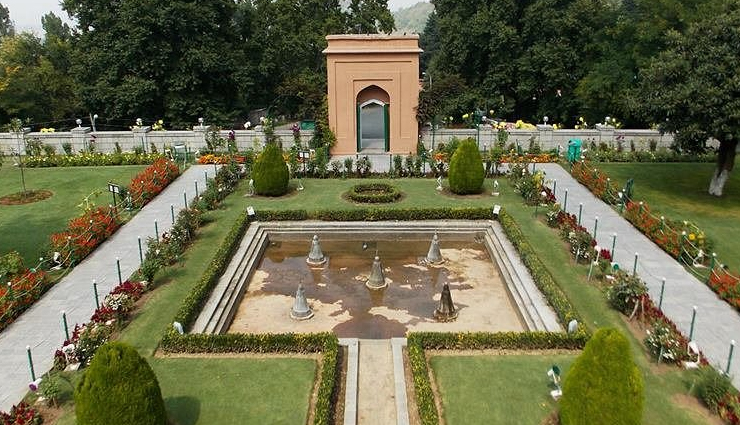
The Mughal Gardens in Srinagar represent garden complexes established during the rule of Mughal Emperors. These gardens were significantly influenced by the Persian Gardens, particularly the char bagh design, showcasing a strong Persian architectural style. Crafting Mughal Gardens became a cherished endeavor of the Mughal rulers.
Shared characteristics among all Mughal Gardens include their structured layouts confined within enclosing walls. These gardens feature intricate systems of canals, fountains, flowing pools of water, as well as a diverse array of trees providing shade, various flowers, fruits, and aromatic grasses.
Among Mughal emperors, Shah Jahan stands out for elevating garden architecture and floral arrangements to their zenith. This pinnacle was exemplified by the creation of the expansive and heavenly Taj Mahal in Agra, dedicated to his beloved wife Mumtaj Mahal. However, the focus of this article is not on the Taj Mahal.
Instead, our attention shifts to other equally remarkable Mughal Gardens in Kashmir, which the Mughals embraced as their summer capital. Discover more about the prominent Mughal Gardens in Kashmir that deserve a visit if you're planning a trip to this enchanting region.
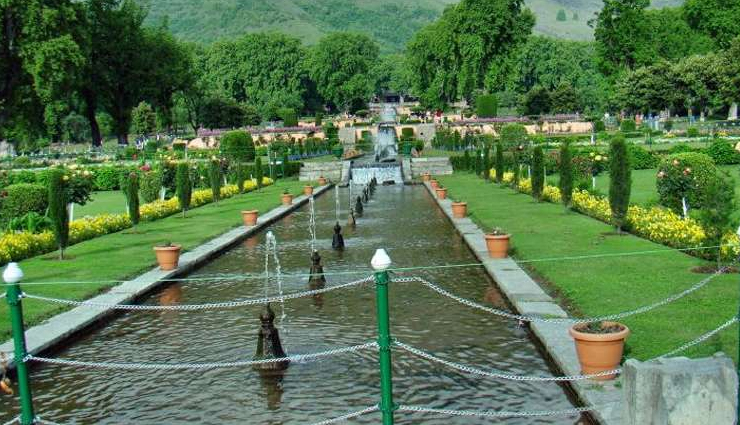
# Nishat Bagh
A garden synonymous with happiness, a garden that radiates joy, a garden that embodies pure delight – regardless of the chosen descriptor, Nishat Bagh in Srinagar possesses an unparalleled beauty that transcends every interpretation. When we delve into the annals of history, the Mughal era emerges as an overwhelmingly influential epoch in Kashmir's narrative. Having toppled even the most formidable of monarchs, the Persian rulers turned their attention to Kashmir during the 16th century.
It was the sheer allure of the valley that beckoned their conquest and dominion. The zenith of this era arrived with Jahangir, a fervent patron of the arts, who developed an unwavering affection for Kashmir. He initiated the construction of some of the region's most resplendent landmarks, Nishat Bagh being among them.
In actuality, Nishat Bagh was erected in 1633 by Asaf Khan, the brother of Jahangir's empress. Rooted in its Persian heritage, Nishat Bagh stands as a preeminent testament to the Mughal legacy in India. Situated along the scenic Dal Lake, the garden graces the lake's eastern shore. A remarkable facet of its placement is the intentional linkage of the lowest terrace to the lake.
Adhering to the Persian architectural philosophy, Nishat Bagh is tiered into 12 terraces, each corresponding to a zodiac sign. Notably, many of the majestic Chinar trees that adorn these terraces were personally planted by the hands of Mughal emperors. In essence, Nishat Bagh in Kashmir manifests as a captivating amalgamation of flowered expanses, dancing fountains, and cascading terraces, offering profound insights into the quintessence of Mughal design principles.
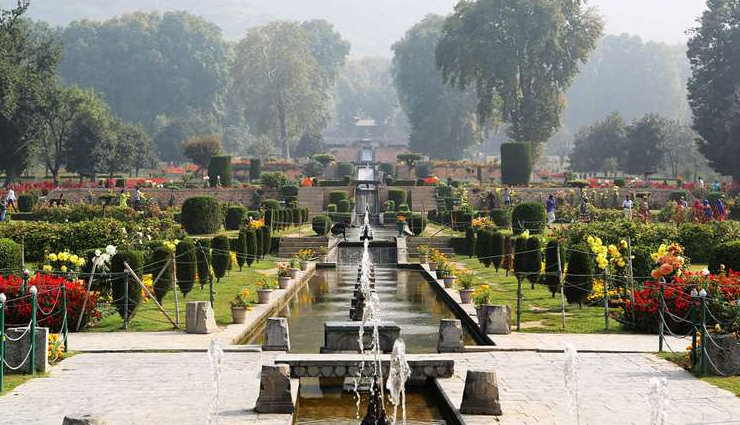
# Shalimar Bagh
Shalimar Bagh stands as one of the most splendid gardens in Kashmir, an exquisite creation attributed to the Muslim dynasty. This enchanting garden took shape under the watchful gaze of the Mughal emperor Jahangir, and uniquely, it was entirely designed by him. Before delving into its detailed portrayal, it's imperative to illuminate its historical origins. In the second century, King Pravarsena II established the foundation of Srinagar, fashioning for himself a retreat by the shores of Dal Lake, which he christened as Shalimar. While the cottage he erected eventually succumbed to decay, the name 'Shalimar' endured the test of time.
This appellation endured through the ages, eventually reaching the 16th century when Jahangir graced this land. Inspired by the site's history, he conceived a majestic garden on its terrain, thereby bequeathing the name Shalimar Bagh to this regal creation. To delight his queen, the emperor orchestrated the formation of this grand garden, and today, in the 21st century, it remains a cherished jewel of the Kashmir Valley.
In the contemporary landscape, Shalimar Bagh is intertwined with another garden known as Faiz Baksh, an addition made during the reign of Jahangir's son, Shah Jahan. The lower expanse of the garden, comprised of three terraces, bears the title Diwan-i-Aam, while the remaining two terraces reside in the upper precinct.
The upper segment of Shalimar Bagh is believed to have catered to the emperor and his courtiers, thus earning the name Diwan-i-Khas. The Mughal custodians invested meticulous effort in adorning the garden, culminating in the installation of pavilions, pools, and fountains at the peripheries of each terrace. Overall, the garden's layout reflects a meticulously devised plan that splendidly encapsulates the essence of Mughal architectural finesse. Noteworthy exemplars of this craftsmanship include the Pink Pavilion (Diwan-i-Aam) and the Black Pavilion (Diwan-i-Khas).
These architectural gems also possess significant significance, being among the few remaining Mughal structures in all of Kashmir. Beyond their awe-inspiring manifestations of brick and mortar, these structures seamlessly harmonize with the unspoiled natural beauty of Shalimar Bagh, forming an embodiment of architectural and natural synergy.

# Chashma Shahi
Constructed in 1632 under the direction of Ali Mardan Khan during the reign of Mughal emperor Shah Jahan, Chasme Shahi emerges as a significant draw for tourists in Kashmir. This garden was conceptualized by Shah Jahan himself for his cherished and eldest son, Dara Sikoh. The emperor chose the slopes of the Zabarwan Mountains as its location, embracing a natural spring. Remarkably, this spring endures even in its present configuration.
This natural spring originates from the garden's initial terrace, progressing through the subsequent tiers. As the water cascades from the first to the second terrace, it converges into a sizable pool, with a central fountain gracing its depths. There is also a belief held by some that the waters of this natural spring possess medicinal qualities.
A fascinating narrative underpins this belief in the spring's healing properties. Legend recounts that once Mumtaz Mahal, Shah Jahan's wife, fell ill, and she consumed water from this very spring. Miraculously, her health was restored, prompting the widespread adoption of the spring's waters by the royal household.
The royals held the conviction that regular consumption of this water could yield remarkable benefits for the skin. Embodying its Mughal legacy, Chasme Shahi exudes echoes of Persian artistry and architectural finesse. Despite being the smallest Mughal garden in Kashmir, it distinguishes itself through its architectural prowess and ingenious layout. Adjacent to Chasme Shahi lies the Pari Mahal, where Dara Sikoh pursued the study of astrology before meeting his tragic fate at the hands of his usurping brother, Aurangzeb.
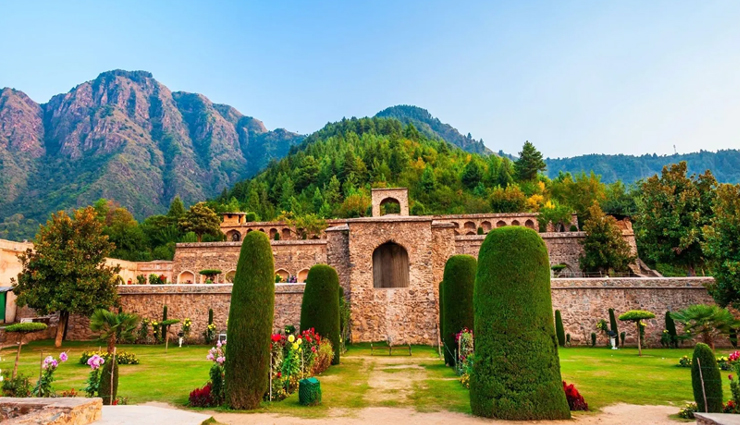
# Pari Mahal
The tradition of constructing architectural marvels within the family lineage persisted beyond Shah Jahan's era. This time, it was his son who contributed to the legacy of Mughal artistic expression. Prince Dara Shikoh, the eldest offspring of Emperor Shah Jahan, undertook the creation of Pari Mahal in Kashmir in the year 1650 AD. Situated atop the Zabarwan Mountain range, this garden palace known as Pari Mahal is in close proximity to Dal Lake.
Executed in accordance with the principles of Persian architecture and the Char Bagh concept, the garden encompassing Pari Mahal is divided into seven terraces, distinct from the conventional water fountain-laden Mughal gardens in Kashmir. The name "Pari Mahal," translating to the "palace of fairies," owes itself to the structure's resemblance to an enchanting, otherworldly castle. Notably significant, this garden palace stands as an exquisite illustration of the Mughal architectural and horticultural style.
The site where this grand edifice now stands was once occupied by the ruins of a Buddhist monastery. Prince Dara Shikoh chose this location to establish Pari Mahal, dedicating the edifice to his mentor Mulla Shah. It was at this very site that Mulla Shah imparted teachings on astronomy and astrology to the prince. Tragically, it was also within this garden that Prince Dara Sikoh met his end, falling victim to his younger sibling Aurangzeb.
Adhering to the quintessential Mughal architectural style, the entrance to Pari Mahal features an arch, followed by a dome. Flanking the dome are a series of chambers and rooms. While the overall design of the garden adheres to a consistent Mughal architectural pattern, the third terrace distinguishes itself from the rest. A network of steps links all the terraces together.
It's worth noting that the presence of defense personnel in the vicinity should not come as a surprise, as Pari Mahal also serves as a campsite for the Indian Paramilitary unit.
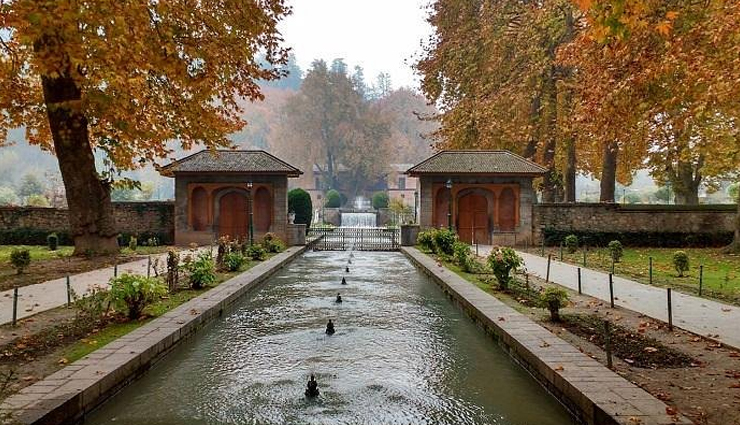
# Achabal
Kashmir's captivating beauty captivated the Mughal connoisseurs of art to such an extent that Emperor Jahangir, accompanied by his consort and entourage, relocated to this Indian region, designating it as the favored Mughal summer retreat. The Emperor's wife, Noor Jahan, a nature enthusiast herself, played a pivotal role in establishing the Achabal garden in 1620.
Found approximately 58 kilometers from the capital city of Srinagar, Achabal Bagh is a veritable treasure for both nature aficionados and enthusiasts of Mughal architectural grandeur. Nestled atop a hill with an elevation of 1677 meters, Achabal Bagh manifests as a vibrant mosaic of colors, its landscaping meticulously aligned with the tenets of Persian gardening. To infuse a regal ambiance, the garden's periphery is adorned with stately Chinar trees, their verdant majesty enduring to this day, upholding the garden's aristocratic aura.
In keeping with the quintessential Persian architectural concept of Char Bagh, Achabal Bagh is delineated into four terraces. The garden's most distinctive feature is a spring whose waters play a pivotal role in irrigating the entire expanse. Flowing through a network of canal, branch canal, and pavilion, this spring is confined within the garden's confines.
While adhering to the fundamental Persian Char Bagh blueprint, Achabal Bagh distinguishes itself from its counterparts. What sets it apart is its secluded placement amidst the natural surroundings, a characteristic missing in other gardens in Kashmir. Furthermore, while others have strayed from their original water sources, Achabal Bagh continues to rely on its native spring. Thus, within the embrace of its innate natural splendor and architectural marvels, the garden seems to perpetuate the enchantment of its bygone Mughal heritage.
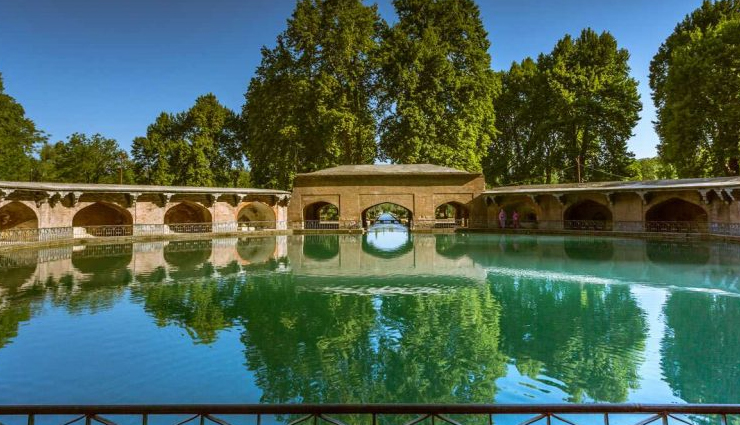
# Verinag
Verinag emerges as a captivating Mughal garden nestled at the base of the Banihal mountain ranges to the south of Srinagar. Constructed under the capable guidance of Mirza Haider, an accomplished engineer of Jahangir's Mughal court, this garden's inception dates back to the year 1619, spurred by Emperor Jahangir's command.
At its core, Verinag is organized around a spring that is an integral part of the Jhelum River, its design elegantly adopting an octagonal configuration. The allure of Verinag lies in the harmonious symmetry it achieves, seamlessly blending its geometrical framework with the natural environs. The garden's enchantment gripped Emperor Jahangir so profoundly that it held a special place in his heart, ultimately becoming his favored haven. This fondness was so profound that Jahangir even expressed his wish to rest eternally here, following his demise.
Mirza Haider's original rendition of the garden differed slightly from its current manifestation. Roughly seven years after its establishment, Jahangir's son, Shah Jahan, envisaged augmenting the garden's allure. This vision translated into the incorporation of fountains and cascades surrounding the springs of the Jhelum, elements that Verinag proudly showcases.
In addition to these enhancements, Shah Jahan extended the garden's amenities to encompass both hot and cold baths, which remain preserved to this day. Beyond these enrichments, the present-day Verinag also unfolds vistas of densely wooded deodar forested hills, a backdrop absent during its initial incarnation.





